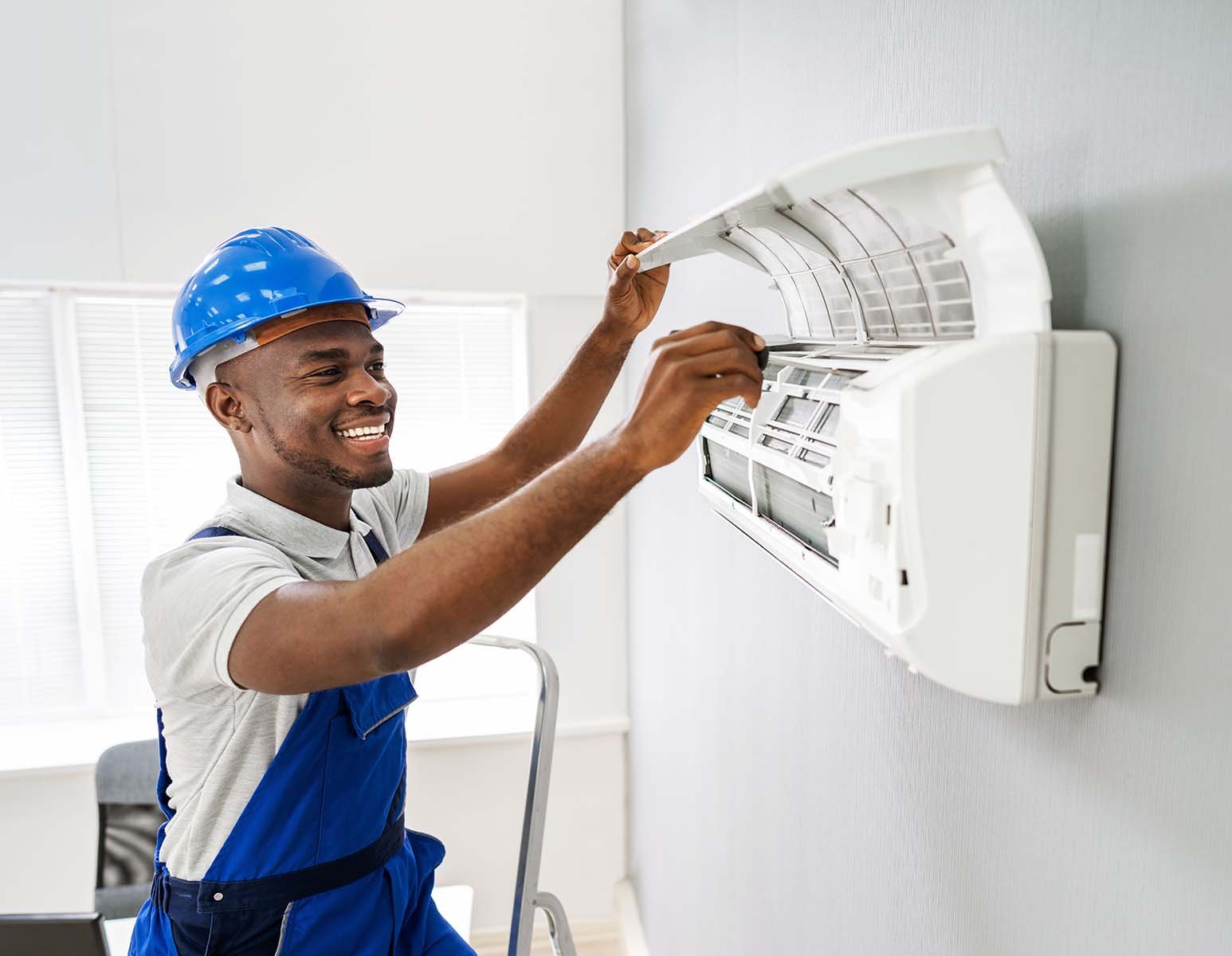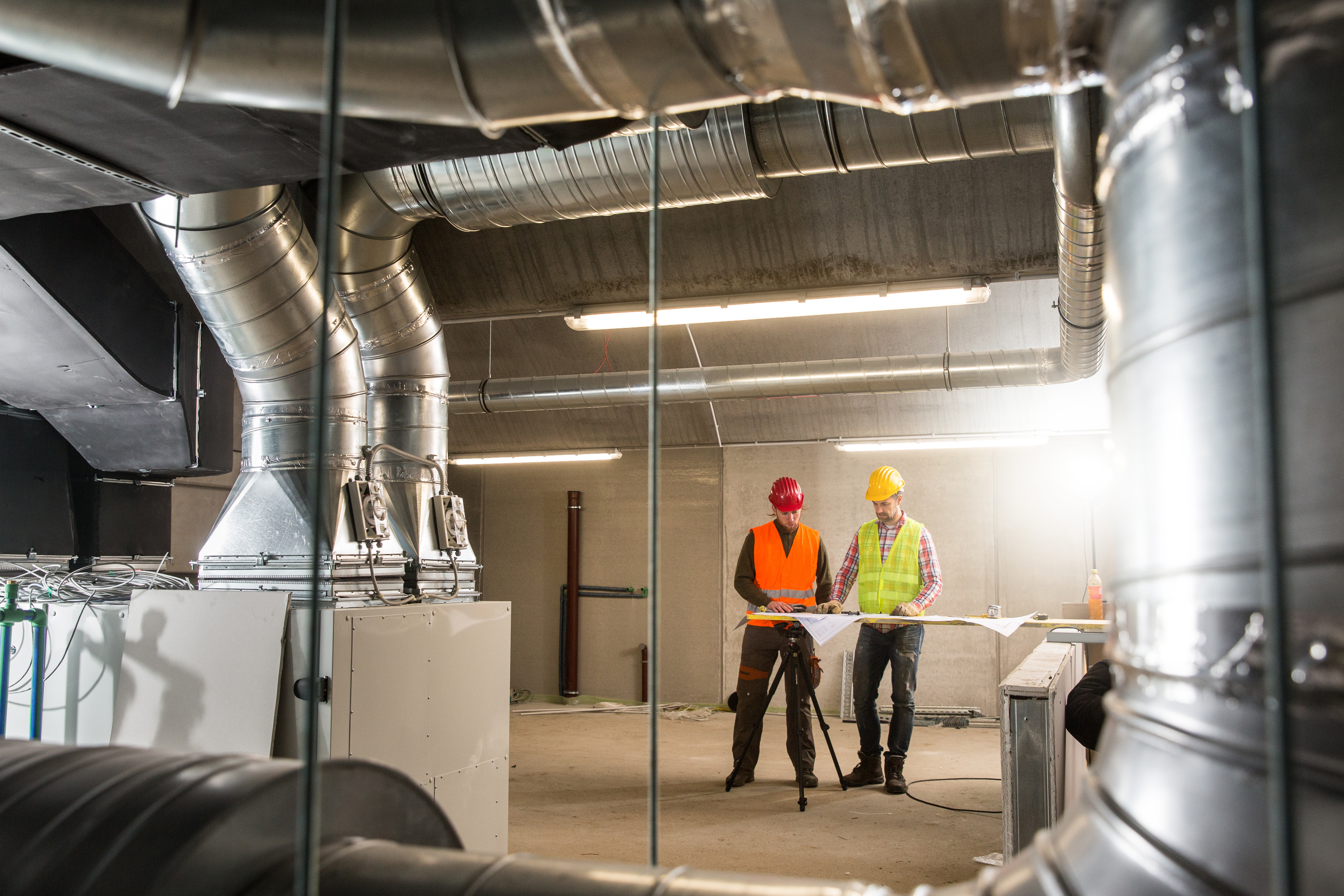Understand how HVAC experts ensure durable heating and cooling solutions
Discovering the Necessary Elements of a Reliable HVAC System
An efficient a/c system is developed on numerous vital parts that operate in harmony. Each component, from the thermostat to the ductwork, plays a crucial duty in preserving comfort and power efficiency. Recognizing these aspects is crucial for enhancing efficiency and improving indoor air top quality. As one analyzes these components, the detailed partnerships between them reveal understandings right into improving general system effectiveness. What certain aspects contribute most to this efficiency?
The Duty of the Thermostat in HVAC Effectiveness
Typically ignored, the thermostat plays an important function in the effectiveness of HVAC systems. This little gadget works as the main nerve center, controling temperature settings and making certain suitable convenience within a space. By precisely sensing the ambient temperature, the thermostat interacts with the home heating, air, and ventilation conditioning units to preserve the preferred environment
An effective thermostat decreases energy usage by activating the a/c system only when needed, thereby stopping too much home heating or cooling. Modern smart and programmable thermostats enhance this efficiency further by permitting customers to set routines and from another location adjust settings, adapting to everyday routines.
Additionally, the positioning of the thermostat is essential; incorrect area can result in incorrect temperature analyses, leading to ineffective procedure. Overall, a well-functioning thermostat not just boosts comfort yet additionally adds significantly to power cost savings and the long life of the a/c system.
Comprehending the Significance of Air Filters
Air filters offer a necessary function in a/c systems by assuring that the air flowing within an area continues to be clean and healthy and balanced. These filters trap dirt, irritants, and other toxins, avoiding them from being recirculated throughout the setting. By catching these fragments, air filters add to boosted interior air top quality, which can greatly benefit passengers' wellness, particularly those with allergies or breathing problems.
In addition, keeping tidy air filters boosts the efficiency of a/c systems. Blocked filters can limit air movement, causing the system to work harder to keep desired temperatures, causing enhanced energy consumption and higher utility bills. Frequently changing or cleaning filters is a crucial upkeep step that can extend the life-span of a/c devices. Eventually, recognizing the importance of air filters enables property owners and structure managers to take positive procedures to guarantee a well-functioning, reliable a/c system that advertises a safe and comfy indoor environment.

The Functionality of the Heating System and Warmth Pump
Furnaces and heat pumps are essential elements of a/c systems, in charge of providing heat throughout colder months. Heating systems operate by home heating air via burning or electrical resistance, then dispersing it throughout the home via ducts. They normally offer fast home heating and can be fueled by natural gas, electrical power, or oil, depending on the system type.
Alternatively, heatpump transfer warmth rather than generate it. They remove heat from the outdoors air or ground, even in low temperatures, and move it indoors. HVAC experts. This twin performance enables heatpump to additionally give cooling in warmer months, making them flexible options for year-round climate control
Both systems need correct upkeep to assure effectiveness and durability. While heaters master severe cold, heatpump can be helpful in modest environments. Recognizing their distinctive capabilities help house owners in choosing one of the most appropriate option for their home heating needs.
Checking Out the Cooling Unit
The a/c device is a crucial component of a/c systems, readily available in numerous types to fit various demands. Understanding the performance rankings of these devices is vital for making informed choices concerning energy usage and price. This section will discover the diverse sorts of a/c and clear up how effectiveness scores impact performance.
Kinds Of Air Conditioners
While various aspects influence the choice of a/c systems, recognizing the different types offered is crucial for property owners and building managers alike. Central air conditioners are made to cool down entire homes or buildings, utilizing a network of ducts for air flow. Home window units provide a more local remedy, perfect for small areas or solitary spaces. Portable air conditioning unit supply flexibility, enabling customers to move the device as required. Ductless mini-split systems are one more choice, combining the performance of central systems with the benefit of zoning, as they need no ductwork. Finally, geothermal systems harness the earth's temperature level for energy-efficient air conditioning. Each type features unique benefits, making informed choices crucial for reliable climate control.

Effectiveness Ratings Clarified
Understanding performance rankings is essential for choosing the right cooling unit, as these metrics supply understanding into the system's efficiency and power consumption. One of the most typical rating for ac unit is the Seasonal Energy Effectiveness Ratio (SEER), which measures the cooling outcome throughout a typical cooling season divided by the overall electric power input. A greater SEER indicates far better efficiency. In addition, the Power Efficiency Ratio (EER) is made use of for determining performance under certain problems. One more vital metric is the Energy Celebrity accreditation, which symbolizes that an unit satisfies stringent power effectiveness guidelines. By examining these scores, customers can make enlightened options that not just maximize convenience however additionally decrease power costs and ecological impact.
The Relevance of Ductwork and Air flow
Efficient ductwork style and air flow monitoring play essential roles in the additional resources total performance and efficiency of cooling and heating systems. Proper ductwork guarantees that conditioned air is distributed equally try this throughout an area, minimizing temperature changes and boosting comfort. Well-designed ducts minimize resistance to air flow, minimizing the workload on a/c tools and eventually decreasing power consumption.
Airflow management entails tactically placing vents and registers to enhance the circulation of air. This protects against typical concerns such as warm or cool areas, which can occur when air flow is blocked or improperly well balanced. Furthermore, the ideal air duct materials and insulation can additionally boost efficiency by minimizing warmth loss or gain during air transportation.
A reliable ductwork system not only contributes to energy savings yet can also extend the life expectancy of HVAC equipment by minimizing unnecessary strain (HVAC experts). Recognizing the significance of ductwork and air flow is necessary for accomplishing peak Heating and cooling system performance.
Regular Maintenance Practices to Improve Efficiency
Regular upkeep practices are vital for guaranteeing peak performance of cooling and heating systems. These methods include regular examinations, cleaning, and necessary repair services to keep the system running effectively. Frequently changing air filters is crucial, as clogged filters can block air flow and decrease effectiveness. Additionally, specialists must check and clean evaporator and condenser coils to avoid getting too hot and power wastefulness.
Annual professional examinations are likewise recommended, as experienced service technicians can determine potential issues prior to they rise. Oiling moving parts lessens damage, adding to a longer life-span for the system. Additionally, ensuring that the thermostat functions correctly help in keeping ideal temperature level control.

Often Asked Concerns
How Commonly Should I Change My Thermostat?
Thermostats need to typically be changed every 5 to 10 years, depending upon usage and technology improvements. Routine checks are recommended to assure peak efficiency, particularly if experiencing inconsistent temperature level control or increased power expenses.
What Size Air Filter Is Ideal for My A/c System?
The very best dimension air filter for an a/c system differs by system design. Typically, it's vital to get in touch with the owner's guidebook or inspect the existing filter dimensions to ensure peak performance and air quality.
Can I Install a Warm Pump Myself?
Mounting a heatpump separately is possible for competent people, but it calls for understanding of regional codes and electrical systems. Working with a professional is recommended to ensure proper installment and optimal system efficiency.
How Do I Know if My Ductwork Is Efficient?
To determine ductwork efficiency, one must look for leakages, step air flow at vents, inspect insulation quality, and evaluate temperature differences in between supply and return air check over here ducts. Specialist assessments can supply thorough insights right into general performance.
What Are Indicators My Heating And Cooling Needs Immediate Upkeep?
Signs that a HVAC system requires immediate upkeep consist of uncommon sounds, irregular temperatures, increased energy expenses, undesirable smells, and constant biking. Resolving these issues immediately can avoid more damage and guarantee optimal system performance.
Air filters serve a crucial function in Heating and cooling systems by ensuring that the air flowing within a space continues to be healthy and balanced and clean. Additionally, preserving clean air filters boosts the efficiency of HVAC systems. Ductless mini-split systems are an additional choice, incorporating the effectiveness of central systems with the ease of zoning, as they need no ductwork. Understanding performance scores is crucial for choosing the best air conditioning system, as these metrics offer understanding right into the system's performance and power usage. The ideal dimension air filter for an A/c system differs by device style.